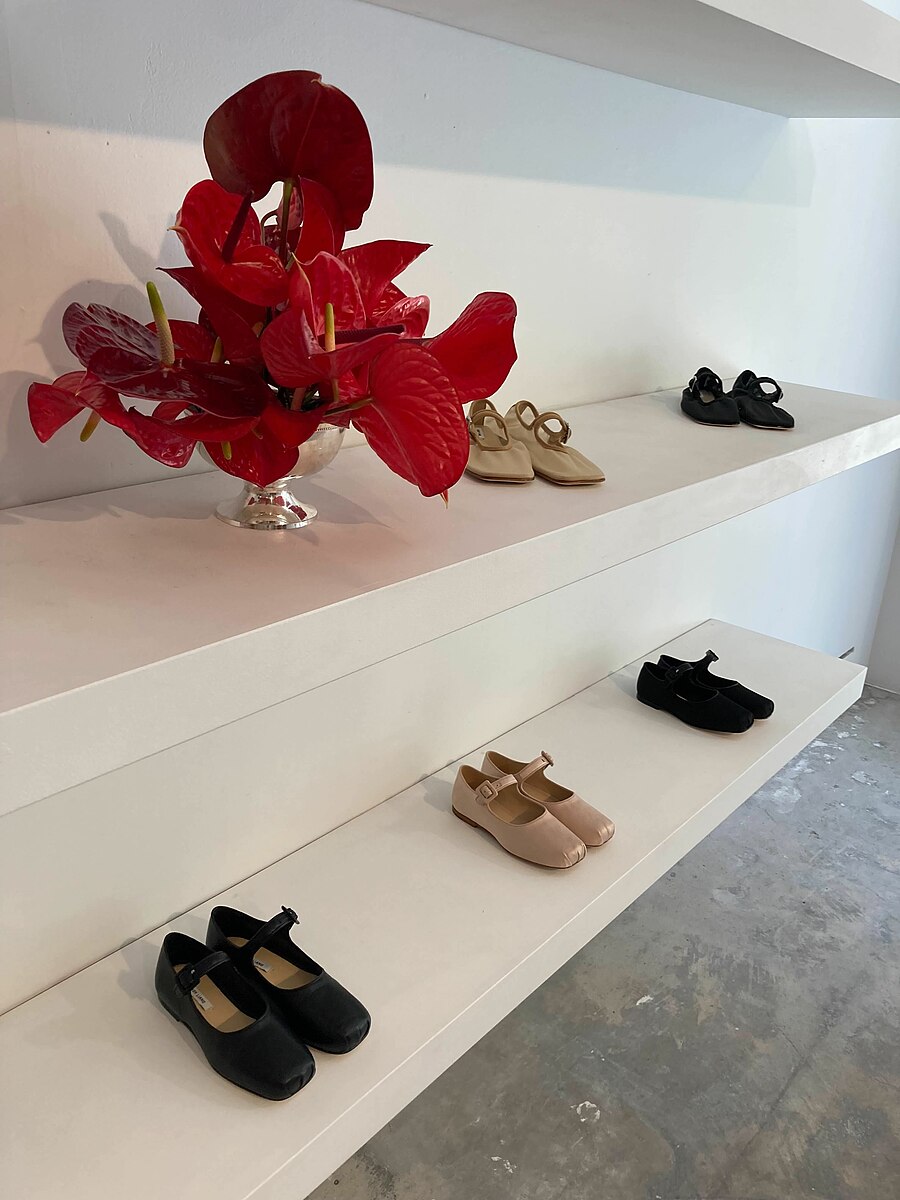During the pandemic, Asian American business owners faced a disproportionate amount of hate, bigotry, and discrimination because of the propagandistic notion that they were ‘responsible for COVID-19’ and ‘ate bats.’ Since then, it has become invariably crucial to support AAPI creators in all different industries, as this not only helps their businesses flourish but also fosters a sense of solidarity amongst the community.
Sandy Liang is a Chinese American fashion designer who has slowly risen to fame since launching her self-titled brand “Sandy Liang” in 2014. Her introduction into fashion was unexpected and impressive, as she completely changed her career path from studying architecture at RISD to pursuing fashion at Parsons. Through her popularity and unique clothing pieces, Liang constructs a space where AAPI creatives are welcome within a historically exclusive industry. Thus, Sandy Liang and her brand demonstrate the complex social issues of diversity, tokenization, and respectability politics embedded in institutional frameworks.
Raised in New York, Liang is mainly inspired by the style of grandmothers in Chinatown, which is also where her father owns the restaurant Congee Village. Accordingly, her first line entailed a variety of oversized coats modeled by her grandmother, and one of them – a leopard-print fleece jacket – became highly coveted and even referred to as “the hottest jacket in New York Fashion Week” by the New York Times. Liang’s jackets were an ode to her upbringing in Chinatown. Since then, she has designed a number of unique pieces, like her Mary Jane shoes that combine the classic feminine shapes of Mary Janes and ballet slippers – adding the classic bracelet of the Mary Jane onto the dainty slipper. Liang is also responsible for the trend of wearing bows in hair that has blown up this past year. Her revival of the themes of nostalgia and girlhood in the fashion industry have made her extremely popular across generations; as seen in Liang’s redefinition of ultrafemininity through contrasting aesthetics.
The adulation of Liang and her brand is clearly a step in the right direction – Asian American voices are being amplified and celebrated. If one walks down the street in NYC, it’s guaranteed that a handful of people will be wearing her pieces. During Chinese New Year last year, she even released a special collection that I remember admiring, and I even noticed a couple of my classmates wearing it. This exposure and open celebration of Chinese culture is something that is rarely seen and extremely needed in fashion. Increasing visibility of AAPI designers and their work can help reduce cultural appropriation and instead promote appreciation.
Moreover, Liang’s approach to being one of the few AAPI designers in modern fashion is extremely refreshing: Liang said in an interview that her Asian identity is inherently infused in everything she creates. In fact, she actively tries not to confine herself to the label of “Asian designer”: “I’ve never tried to let it guide my career or identify me as just that, I’m so much more!” It’s this type of honesty that has propelled Liang to fame: she is adamant on shattering the glass ceiling, which means being a designer who is Asian rather than an Asian designer.
The tokenization of POC is no abnormal phenomena in historically white, hegemonic spaces like the fashion industry. With regards to the AAPI community, Asian Americans are often spotlighted solely because of their race, with every interview centered on the fact that they aren’t white: “What does it feel like to be Asian? What is it like to be an Asian designer? Do you design Asian clothes? Is your favorite color red?”. Throughout history, many AAPI designers have been associated particularly with collections that “showcase literal connections to their heritage” and nothing more – tokenizing their work and identity. White corporate elites want to create a facade that the industry is diversifying so that more people buy from their company or support whatever they are producing. To do so, they insert one painfully cliche and trite AAPI narrative in a white, cis and hetero context so that they can check a box off for diversity points. This performative inclusivity is extremely counter-intuitive: the corporate cooptation of diversity waters down AAPI culture to serve the needs of bigoted dominant institutions.
Sandy Liang’s interviews and her entire brand reflect a desire to defy these institutional norms of tokenization. She has expressed how she wants to exist as a designer who incorporates different facets of her identity – one of them being Chinese American – into her work. In doing so, she refuses to comply with the conventions of respectability politics. Thus, Liang’s role in fashion is something to keep an eye on: she is placing both girlhood and the Chinese American experience at the forefront of the industry – an intersectional approach that we should all appreciate and celebrate.
Luiysia, CC BY-SA 4.0 , via Wikimedia Commons.

Comments are closed.